Treated Wood Industry Looks to Toughen Standards
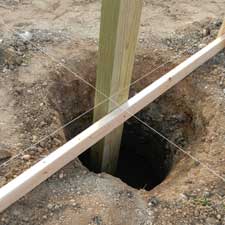 Prior to the EPA (Environmental Protection Agency) dipping its nose into the pressure preservative treating chemical industry in 2002, buying treated wood was pretty darn easy. Chromated Copper Arsenate (CCA) was the treatment of choice for most everything.
Prior to the EPA (Environmental Protection Agency) dipping its nose into the pressure preservative treating chemical industry in 2002, buying treated wood was pretty darn easy. Chromated Copper Arsenate (CCA) was the treatment of choice for most everything.
CCA was so much cleaner to work with than its most common predecessor, penta (pentachlorophenol), was cost competitive and enjoyed a lengthy lifespan.
For more reading on penta treated lumber see: https://www.hansenpolebuildings.com/blog/2012/11/pcp/
I’ve been ranking on the post frame building industry to put the pressure (pun intended) on lumberyards, wholesalers and pressure preservative treatment companies for some time, so it is nice to see another industry (the deck builders) jumping on the wagon for improvements as well.
My most popular rant on pressure treating can be reviewed at: https://www.hansenpolebuildings.com/blog/2012/10/pressure-treated-posts-2/
This recent article by Ted Cushman in the Journal of Light Construction (https://www.jlconline.com/wood/treated-wood-industry-looks-to-toughen-standards_o.aspx?dfpzone=home) lays out the challenges posed by the deck construction industry with pressure preservative treated wood.
Ted also wrote a great article in Professional Deck Builder (https://www.deckmagazine.com/lumber/treated-wood-update_o.aspx) which gives an interesting recent history on the “players” in the pressure preservative chemical industry. This article also has some great explanations as to how different chemicals work to preserve wood.
My hope – the post frame (pole building) industry will organize to put suppliers on notice – we (and our consumers) both want and need products which will withstand the test of time.
Investing in a new pole barn? Then know what it is you’re a buying when it comes to the treatment levels of the columns for your new building. Don’t be satisfied if the vendor says their columns “are treated for in-ground use”. Ask them to specify the treatment level! All treated posts are not the same! Whether building yourself, or buying a “turnkey” building – your hard earned dollars should be spent on something which will indeed last for as long as the rest of the building!
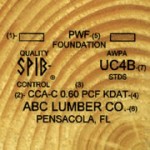 DEAR POLE BARN GURU: Hello, First off I have really enjoyed your website. Informative and simple to navigate. I am emailing from Canada. Not sure if you ship to Ontario. My question deals with building a seaplane hangar (on land) but due to the frost I would need to dig 5′ down to pour my footings. That is a few feet below the lake level. The bottom portion of the poles would essentially be wet the entire year. I am interested in your opinion. Do you feel a pole barn is still a suitable building method in this environment? Is there a technique to treat the buried portion of the posts? (i am thinking applying tar??) Thank you for your time. Cheers. MARK in SEGUIN TOWNSHIP
DEAR POLE BARN GURU: Hello, First off I have really enjoyed your website. Informative and simple to navigate. I am emailing from Canada. Not sure if you ship to Ontario. My question deals with building a seaplane hangar (on land) but due to the frost I would need to dig 5′ down to pour my footings. That is a few feet below the lake level. The bottom portion of the poles would essentially be wet the entire year. I am interested in your opinion. Do you feel a pole barn is still a suitable building method in this environment? Is there a technique to treat the buried portion of the posts? (i am thinking applying tar??) Thank you for your time. Cheers. MARK in SEGUIN TOWNSHIP  DEAR POLE BARN GURU: Do I need a permit for a barn structure in a AG Zoned area 10 acres according to the IBC/ICC codes? I can’t find the code section for Ag Land. I want a Shed that looks like a barn to store my equipment in as my existing barn is for my livestock. This barn was on the property when I bought it. Thank you! MICHELE in ODESSA
DEAR POLE BARN GURU: Do I need a permit for a barn structure in a AG Zoned area 10 acres according to the IBC/ICC codes? I can’t find the code section for Ag Land. I want a Shed that looks like a barn to store my equipment in as my existing barn is for my livestock. This barn was on the property when I bought it. Thank you! MICHELE in ODESSA 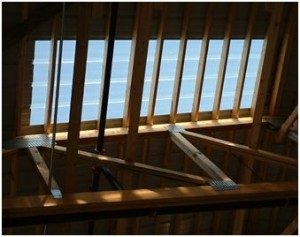 DEAR POLE BARN GURU: I am looking to replace some skylights in an old Wickes building, I understand that the company Wickes is no longer in business. I was wondering if you knew who else would have the same rib pattern, the rib pattern is unusual, there is a major rib at 9in and at 12in of the sheet. ROSS in HOLGATE
DEAR POLE BARN GURU: I am looking to replace some skylights in an old Wickes building, I understand that the company Wickes is no longer in business. I was wondering if you knew who else would have the same rib pattern, the rib pattern is unusual, there is a major rib at 9in and at 12in of the sheet. ROSS in HOLGATE 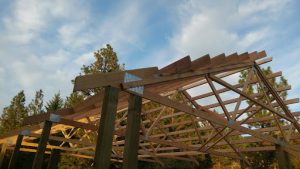 “I’m not sure if you can answer my question or can possible point me in the correct direction. We are about to attach trusses. I thought that I had read somewhere that we needed to isolate the truss connector plates from the treated poles, if they were in a position where they would contact the columns. Also, is it OK to fasten through these connector plates?
“I’m not sure if you can answer my question or can possible point me in the correct direction. We are about to attach trusses. I thought that I had read somewhere that we needed to isolate the truss connector plates from the treated poles, if they were in a position where they would contact the columns. Also, is it OK to fasten through these connector plates?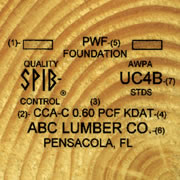
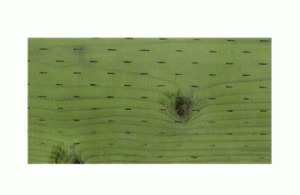 Difficult-to-treat (refractory) lumber species, such as Hem-Fir, must be incised prior to preservative treatment to meet minimum penetration requirements for preservative-treated wood. Incising is a pretreatment process in which small incisions or slits are punched into the wood. To me, the resultant product looks as though the lumber has been walked on by someone wearing golf shoes!
Difficult-to-treat (refractory) lumber species, such as Hem-Fir, must be incised prior to preservative treatment to meet minimum penetration requirements for preservative-treated wood. Incising is a pretreatment process in which small incisions or slits are punched into the wood. To me, the resultant product looks as though the lumber has been walked on by someone wearing golf shoes!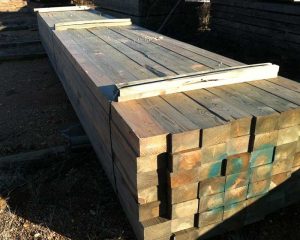 Or maybe more like Scrabble – where my 19 year old daughter always seems to either draw the right letters, or make otherwise incomprehensible words (to her Dad anyway) out of a total jumble.
Or maybe more like Scrabble – where my 19 year old daughter always seems to either draw the right letters, or make otherwise incomprehensible words (to her Dad anyway) out of a total jumble.





